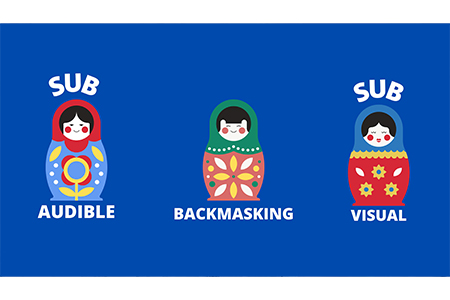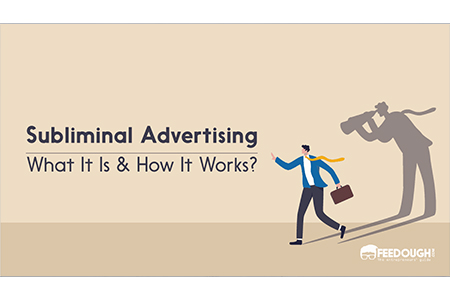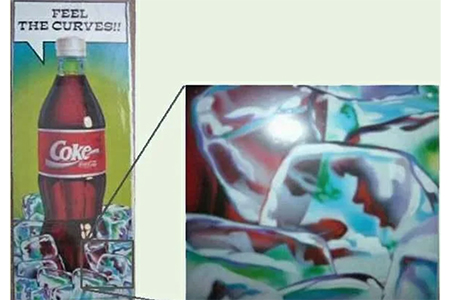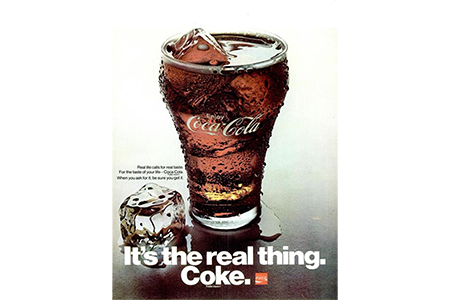Introduction
Subliminal advertising is one of the most provocative and compelling marketing methods ever conceived. It works below the level of conscious perception, quietly affecting consumption without explicit information. The technique is not based on conventional persuasion but rather whispers to the unconscious, evading opposition. Whether in masked photos, capsule statements, or inaudible sonic cues, subliminal messages are designed to influence decisions before we are aware of them. As digital media become increasingly advanced, the utility of such strategies also changes. But what is it really behind the enchantment and mistrust of subliminal marketing? In this journey, we will discover its history, methods, scientific grounding, and moral implications, taking a frank glimpse into the sphere of marketing's most subtle strategy.

History of Subliminal Advertising
The roots of subliminal advertising stretch back to the 1950s when James Vicary, a market researcher, declared that he had increased concession sales by flashing imperceptible messages such as "Drink Coca-Cola" during films. Though later it came to be known that Vicary's study was a hoax, it had managed to grab the public's fearful and fascinated attention. The simple idea that brands could stimulate behavior without the given consent of the person became elusive, warranting quite a camp debating the art of manipulation and control. Legislators responded by putting regulations into place and placing subliminal advertising under scrutiny when the same apprehensions were raised about music and television. Moving over a period of fifty-odd years, subliminal advertising ceased to be just a word in the trash bin and became a serious academic and psychological inquiry. The early claims were exaggerated, but the historic controversies surrounding the technique remain a fuel source for the ongoing discourse about its ethics and limits.
Techniques of Subliminal Advertising
Backmasking
Backmasking is a subliminal advertising technique in which messages are recorded in reverse into a track, usually impossible to hear when played in the regular way. First brought popular attention in music, it was thought that these reversed statements had a subconscious effect on listeners. Critics say most are coincidental and mistakenly interpreted, but marketers and conspiracy theorists have been arguing about their possible psychological impact. Backmasking has even been adopted by some artists and advertisers to stimulate curiosity or enhance branding messages. The science is untested to any great extent, and yet the allure of backmasking holds up as an intriguing, if contentious, tool for subliminal communication.

Subaudible Messaging
Subaudible messaging entails placing low-level audio prompts under music or spoken word, too faint to be heard consciously but potentially registered by the subconscious. Widely employed in self-help tapes or test ads, subaudible messages aim to affect mood, decision, or perception indirectly. While scientific data on its efficacy is conflicting, its use has generated as much curiosity as controversy. Detractors attack it as unethical, while supporters believe it can reinforce good behavior or establish subconscious brand recognition. Whichever, subaudible messaging is an influential, if intangible, force within the arena of subliminal marketing.
Subvisual Messaging
Subvisual messaging involves visual stimuli shown so quickly or weakly that they evade awareness detection. They might be a one-frame picture flashed on screen in a video or concealed forms buried in patterns. The goal is to sway decisions or emotions without anyone noticing. Although its efficacy is questionable, the mere idea of hidden persuasion has interested advertisers and psychologists equally. Subvisual methods have shown up in films, advertisements, and even political campaigns. Though frequently subtle to the point of being invisible, their latent strength is that they can focus on the subconscious mind without provoking conscious examination.

How does Subliminal Advertising work?
Subliminal advertising involves revealing stimuli—visual, auditory, or otherwise—below the level of conscious awareness, there to shape attitude, feeling, or behavior. The scientific basis is the brain's capacity for processing information in the absence of consciousness. Cognitive psychology findings suggest that the subconscious mind can accept short or weak messages, which can influence decision-making or mood subtly. Techniques like subvisual imagery, backmasking, and subaudible sound attempt to plant ideas without the awareness of the person. But the efficacy is usually dependent on the openness of the person and the context of reception of the message. While the processes are still being researched, the underlying assumption is the same: control without detection, using the mind's own hidden pathways to control perception and reaction.

How effective is Subliminal Advertising?
For many people, that kind of advertising makes sense and is convincing. Others say it can only sculpt the last bits of the decision if the message matches something already desired by the subconscious. Consider the subliminal act of showing a brief picture of a drink person's increased odds of choosing the drink disappear if, before rigorous scientific testing, the subject wasn't thirsty. On the other hand, many professionals say these effects are transient and very much dependent on context. Critics say that subliminal, sometimes-actionable measures are not backed by solid, measurable effects. While the thousand-year-old concept of subliminal persuasion is interesting, it is through much skepticism that scientific consensus is passed over. Yet with great intrigue and enormous commercial interest, subliminal advertising is at the forefront, creating fundamental questions about consumer decision-making and the subtle manipulations at play behind our choices.

Applications of Subliminal Advertising
Subliminal advertising gains new terrain in the modern media-driven environment with digital media, social media, and entertainment. Marketers discreetly integrate messages via momentary visuals, evocative imagery, or sound layering to guide consumer activity without direct promotion. Subvisual and subaudible methods are occasionally applied in product placement, brand reinforcement, or emotional priming in advertisements. Aside from advertising, these methods are seen in political communications, motivational material, and even self-help programs. Albeit controversial, the concept of seeding a customer's subconscious remains attractive to marketers who desire to gain an advantage. As the technology evolves, the distinction between conscious persuasion and subliminal influence becomes blurred, stretching the limits of ethical and innovative marketing today.

Examples of Subliminal Advertising
One of the most famous subliminal advertising examples created public interest and scandal. A more traditional example was the claimed flashing of "Buy Popcorn" and "Drink Coca Cola" during a 1957 film shows a subsequently discredited but still iconic claim. In the 1970s, rumors about satanic messages in rock music provoked outrage, with acts such as Led Zeppelin being accused of including satanic words by backmasking. McDonald's and Coca-Cola have more recently been accused of including suggestive words or shapes in commercials. Political campaigns themselves have even faced criticism for glances at emotionally charged images. While the intention behind such messages is called into question, the fact that they appear only increases their fascination to cynics and believers alike, further strengthening the cultural presence of subliminal advertisements.

Frequently Asked Questions (FAQs)
Subliminal advertising is enabled through the placement of brief images, reverse sound, or gentle messages into media that will go past conscious awareness and speak to the subconscious mind directly.
Research presents conflicting results, subliminal ads do influence temporary choices in some conditions, but extreme, long-term impacts are usually baseless and remain extensively debated.
Possible drawbacks are moral issues, legal restrictions, distrust among people, and efficacy concerns that can harm a company's reputation and brand relationship with customers.
When applied responsibly, subliminal methods can quietly build recall for a brand, reinforce messages, or manage mood without overwhelming the viewer or provoking resistance.
Ethical problems are potential consumer manipulation without consent or transparency and exploiting psychological vulnerabilities for commercial ends.



